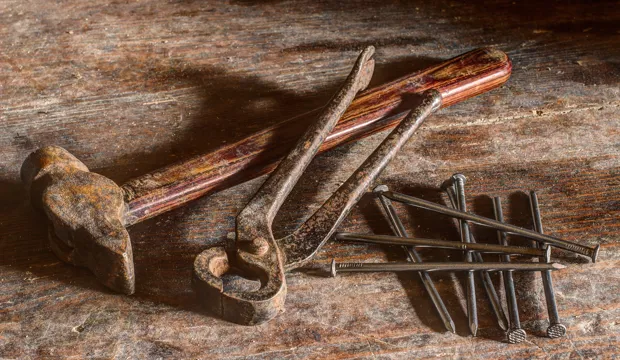
Design and make a cookie cutter using CAD and 3D printing
With our design and technology KS2 teaching resource lesson plan and template, learners will create and make a 3D model of a basic shape and then print it using a 3D printer.
In this fun STEM teaching resource learners will discover how to create a 3D model of a basic shape in TinkerCAD and then print it using a 3D printer.
We’ve created this classroom design activity to support the delivery of key topics within design & technology (D&T) and engineering. This teaching resource activity is based on 3D printing and provides a straightforward, practical way to introduce this technology into the curriculum.
This activity introduces the concept of 3D CAD design and some of the basic tools used with CAD software. The software used for the CAD activity is the free and widely used TinkerCAD; however, this could easily be substituted for any other 3D CAD software already available in school.
The activity involves designing a basic shaped cookie cutter, then printing it out using a 3D printer. The guidance given for the printer is generic and may need to be varied depending upon the specific model(s) available in school.
This could be used as a main lesson activity to introduce basic CAD drawing skills or 3D printing. It could also be used as the basis for an integrated scheme of work, where learners subsequently use their cookie cutters to make biscuits, allowing integration with maths (measuring out ingredients) and food technology skills.
Activity: Designing and making a cookie cutter
Learners will be introduced to TinkerCAD (or other CAD software as preferred by the school) and then select their own shape and produce a design for a cookie cutter. Learners will then share and evaluate their designs with their peers with the option of 3D printing them if printers are available.
Tools/supplies needed:
- Computer with TinkerCAD
- 3D Printer
- PLA filament of an appropriate diameter for the equipment available
- Optional (for starter): examples of plastic cookie cutters
Follow our step-by-step guide on how to design and make a cookie cutter
Learners will design and make a cookie cutter using CAD and 3D printing.
TinkerCAD instructions
- Log into TinkerCAD.
- Click on Design, then +Create, 3D Design
- Click on basic shapes in the shapes library
- Choose the 5-pointed star
- Drag the star onto the drawing sheet
- Hold shift, click on a corner handle and drag out
- Try to get sizes close to 72 x 76 mm as shown – use the red dot in the corner and drag it with your mouse
- Click and hold the square in the middle – drag down to 3 mm
- We need three stars. Press CTRL and D to copy – do this two times. The stars will sit on top of each other
- Drag the stars apart as shown
- Select star number one by clicking on it
- Holding Shift, drag out to be 5 mm bigger – it should now be about 79 x 83 x 3 mm
- Click on star number two
- Drag to 15 mm high using the centre square
- Click on star number three
- Drag a corner to make it 2 mm smaller in the x and y directions – if you hold shift, this makes it reduce equally in size
- Make star three 20 mm tall
- Click to make it into a hole
- Click on the work plane and drag a box to select all the stars
- Click to align three stars
- Click centre circle
- Click here to align the three stars
- Click to group the stars – this makes them one object
- Now 3D print your cookie cutter.
The engineering context
CAD is a versatile tool used by engineers across various disciplines to conceptualise, design, analyse, and document complex systems and structures. For example, engineers use CAD to design cars and buildings and to carry out virtual testing of aircraft wings.
3D printing is an area of huge growth, with applications ranging from small plastic parts to printing metal bridges in place over rivers!
Suggested learning outcomes
This resource combines design and technology with engineering with the aim that the learners will be able to develop skills in CAD and be able to 3D print a design idea successfully.
Download our activity sheet and other teaching resources
All activity sheets and supporting resources are free to download, and all the documents are fully editable, so you can tailor them to your students’ and your schools’ needs.
The activity sheet includes teachers’ notes, useful web links, and links (where appropriate) to the national curriculum in each of the four devolved nations; England, Northern Ireland, Scotland and Wales.
You can download our step-by-step instructions below as either a classroom lesson plan or PowerPoint presentation.
Please do share your highlights with us @IETeducation.




